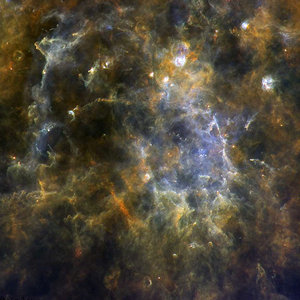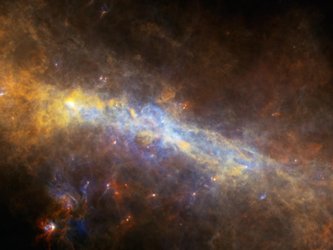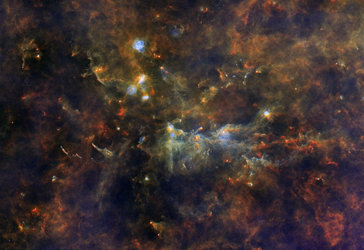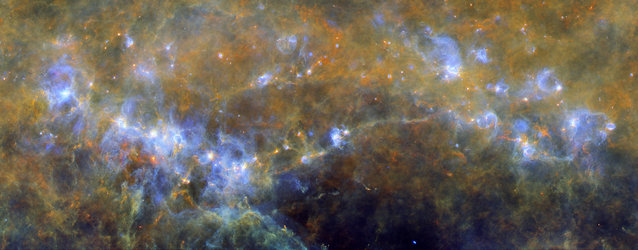Accept all cookies Accept only essential cookies See our Cookie Notice

About ESA
The European Space Agency (ESA) is Europe’s gateway to space. Its mission is to shape the development of Europe’s space capability and ensure that investment in space continues to deliver benefits to the citizens of Europe and the world.
Highlights
ESA - United space in Europe
This is ESA ESA facts Member States & Cooperating States Funding Director General Top management For Member State Delegations European vision European Space Policy ESA & EU Space Councils Responsibility & Sustainability Annual Report Calendar of meetings Corporate newsEstablishments & sites
ESA Headquarters ESA ESTEC ESA ESOC ESA ESRIN ESA EAC ESA ESAC Europe's Spaceport ESA ESEC ESA ECSAT Brussels Office Washington OfficeWorking with ESA
Business with ESA ESA Commercialisation Gateway Law at ESA Careers Cyber resilience at ESA IT at ESA Newsroom Partnerships Merchandising Licence Education Open Space Innovation Platform Integrity and Reporting Administrative Tribunal Health and SafetyMore about ESA
History ESA Historical Archives Exhibitions Publications Art & Culture ESA Merchandise Kids Diversity ESA Brand Centre ESA ChampionsLatest
Space in Member States
Find out more about space activities in our 23 Member States, and understand how ESA works together with their national agencies, institutions and organisations.
Science & Exploration
Exploring our Solar System and unlocking the secrets of the Universe
Go to topicAstronauts
Missions
Juice Euclid Webb Solar Orbiter BepiColombo Gaia ExoMars Cheops Exoplanet missions More missionsActivities
International Space Station Orion service module Gateway Concordia Caves & Pangaea BenefitsLatest
Space Safety
Protecting life and infrastructure on Earth and in orbit
Go to topicAsteroids
Asteroids and Planetary Defence Asteroid danger explained Flyeye telescope: asteroid detection Hera mission: asteroid deflection Near-Earth Object Coordination CentreSpace junk
About space debris Space debris by the numbers Space Environment Report In space refuelling, refurbishing and removingSafety from space
Clean Space ecodesign Zero Debris Technologies Space for Earth Supporting Sustainable DevelopmentLatest
Applications
Using space to benefit citizens and meet future challenges on Earth
Go to topicObserving the Earth
Observing the Earth Future EO Copernicus Meteorology Space for our climate Satellite missionsCommercialisation
ESA Commercialisation Gateway Open Space Innovation Platform Business Incubation ESA Space SolutionsEnabling & Support
Making space accessible and developing the technologies for the future
Go to topicBuilding missions
Space Engineering and Technology Test centre Laboratories Concurrent Design Facility Preparing for the future Shaping the Future Discovery and Preparation Advanced Concepts TeamSpace transportation
Space Transportation Ariane Vega Space Rider Future space transportation Boost! Europe's Spaceport Launches from Europe's Spaceport from 2012Latest

Glowing jewels in the Galactic Plane
Thank you for liking
You have already liked this page, you can only like it once!
The majority of the stars in our Galaxy, the Milky Way, reside in a single huge disc, known as the Galactic Plane, spanning 100 000 light-years across. The Sun also resides in this crowded stellar hub, lying roughly halfway between its centre and its outer edges.
This disc is filled with a diffuse mixture of gas and dust – the interstellar medium – that pervades space, filling the large gaps found between stars. Occasionally, these clouds of gas and dust cool, becoming denser and denser until they spark star formation, giving rise to new generations of stars.
This image is part of Hi-GAL, a survey of the Galactic Plane completed with ESA’s Herschel Space Observatory. Peering at the sky in infrared light, Herschel could detect the glow of dust particles dispersed between stars. This minor – but crucial – component of the interstellar medium allows astronomers to investigate how stars are born in the Milky Way, and how they affect their environment as they age.
Nestled in the Milky Way’s disc are pockets of gas and dust that have been heated by nearby newborn stars, causing them to glow brightly like cosmic gems. Through their higher temperatures, these regions glow at shorter infrared wavelengths and are depicted in violet and green, while the colder material in the surroundings – only a few tens of degrees above absolute zero – appears redder.
Laced amongst the stars is an intricate network of filaments sprinkled with tiny white spots: these are denser clumps of gas and dust that will likely evolve and give birth to new stars.
The image combines observations from the PACS and SPIRE instruments on Herschel. It spans about 12º on the longer side, corresponding to some 24 times the diameter of the full Moon. This is 1/30th of the entire Galactic Plane survey.
This image was first published in OSHI, the Online Showcase of Herschel Images, in 2011.
-
CREDIT
ESA/PACS & SPIRE Consortium, S. Molinari, Hi-GAL Project -
LICENCE
ESA Standard Licence

Chaotic web of filaments in a Milky Way stellar nursery

Herschel’s view of the Galactic Centre

Hidden secrets of a massive star-formation region

The Little Fox and the Giant Stars















 Germany
Germany
 Austria
Austria
 Belgium
Belgium
 Denmark
Denmark
 Spain
Spain
 Estonia
Estonia
 Finland
Finland
 France
France
 Greece
Greece
 Hungary
Hungary
 Ireland
Ireland
 Italy
Italy
 Luxembourg
Luxembourg
 Norway
Norway
 The Netherlands
The Netherlands
 Poland
Poland
 Portugal
Portugal
 Czechia
Czechia
 Romania
Romania
 United Kingdom
United Kingdom
 Slovenia
Slovenia
 Sweden
Sweden
 Switzerland
Switzerland
























